Starting a podcast is not an easy task. I always say a podcast is a business inside a business, and starting a podcast successfully can be a real challenge because it requires a lot of time and knowledge to get it right.
You probably watched countless YouTube videos on the subject, but the process is still unclear, and all you really want is a clear step-by-step written guide.
This article will give you a step-by-step process on how to start a podcast the right way, but also how we go about ensuring that your podcast is successful after the first episode.
Start A Podcast With Planning

One of the most important aspects when it comes to starting a podcast is planning. Skipping this crucial step can make a real difference in your podcast's success.
Think of this step as the groundwork and foundation of your podcast. Ideally, this should all be present in a podcast plan document. This document will serve as a guide throughout your entire podcasting journey.
Come up with a podcast idea
Coming up with an original podcast idea shouldn't be difficult. At the core, what really matters is what your target audience wants (we will explore this later). Your podcast format will also depend on the type of industry you are in, so coming up with the right podcast concept is crucial.
Ultimately, your podcast will be in one of the following major podcast styles:
Starting a B2B Podcast?
If you are a B2B business trying to use podcasting as a marketing tool, a B2B podcast may be the way to go.
This type of podcast will try to target decision-makers within your business niche with the goal of generating business exposure and then lead generation. A B2B podcast must be educational and act as a platform for high-profile guests within your business niche.
One of our clients is an example of a B2B podcast: Datarails uses FP&A Today as a branding awareness tool, attracting decision-makers such as CFOs to use their fantastic Financial Planning and analysis Tool.
What About Starting a B2C Podcast?
If your business sells directly to consumers, you may consider starting a B2C Podcast. In this case your target audience will be the average day-to-day people, looking for the latest product or service.
An example of a B2C podcast is Vanessa Bell's show called "Fashion To Farmer", another one of our clients. In FTF, Vanessa promotes the use of natural fibre merino wool, from which she creates premium products for consumers.
Starting A Podcast as an Influencer?
There is a high number of what I call "Influential Podcasts". These are shows that aren't tied to a business, but the podcast itself is a go-to place for information on a specific topic.
All podcasts in the niche of politics, comedy, lifestyle and any other podcast under the sun that is not linked to a business would fit in this category.
These podcasts also have a higher chance of becoming successful due to a large target audience. In this scenario, podcasters may actually create a business out of a podcast through sponsorship deals, crowdfunding, merchandise, or other monetisation techniques.
An example of an "Influential Podcast" is our client - Badass Basic Bitch. On the show, Brianna Dunbar interviews successful women who share their empowering stories. This podcast managed to bring together a huge community of like-minded women.
Podcast Name
If you believe the answer to the question of how to start a podcast is hard, wait until you go down the rabbit hole of finding an appropriate podcast name. Unfortunately, many get stuck here, but there's an easy way out.
Finding a podcast name shouldn't be difficult. Here are a few techniques I suggest using.
-
Create a spinoff out of your business name
-
Use words related to your business
-
Use your personal name (Great for personal branding)
-
Ask AI for a list of original podcast names and shape it in your own way
Create a name that is memorable and fits your brand. It is also worth checking if the name will be available on all social media platforms. Use - Namechecker for this.
It's also worth checking if there are domains available using your name. You can check this on Godaddy or Domain.com
Regardless of what you end up using, check your podcast name on trademark organisations such as EUIPO or USPTO. Ensure your podcast name is not used within your class and that you don't infringe on anyone's existing name.
Establish Podcast Goal
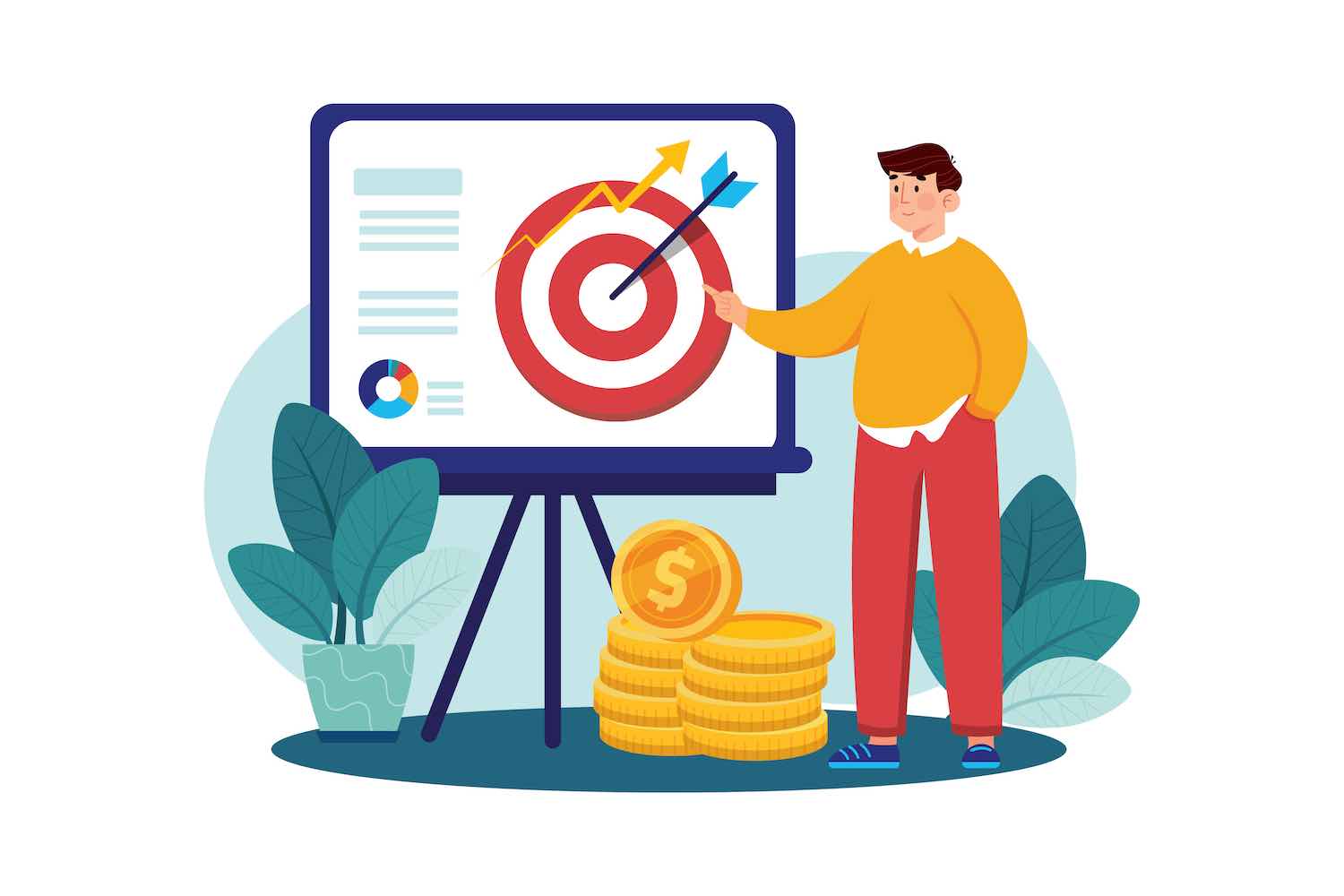
A successful podcast will always have a clear goal. This closely ties to the style of podcast you want to run. Here are a few of the goals you may consider for your show.
-
Attract customers to a business and increase brand & visibility
-
Grow a personal brand
-
Create a community
-
Raise awareness for a cause
-
Monetizing a podcast
-
Just having fun and running it as a hobby
Be clear about your goal so you can measure it over time.
Podcast Brand
Build an attractive podcast brand. In some cases, podcasts are just an extension of a business, so the podcast brand is dictated by the business brand.
Not to be confused with "branding", which refers to the audio-visual aspects of a brand.
When building a podcast brand, it is important to imagine yourself in your audience's shoes and ask, "What do they feel when they watch or listen to my podcast?"
Here is where you can make key decisions about your podcast brand.
-
Should the podcast be serious, conversational, or plain funny?
-
Does it feel exclusive, or is it open for everyone?
-
Will people feel shock, joy, laughter or intrigue?
Audio Branding
You would probably recognise the sonic logo of Netflix or the Windows chime from a million sounds. Without realising it, we are all subject to the most subtle form of marketing, and that is audio branding.
Because podcasts are an audio format first, audio branding plays a crucial role in podcasting.
Firstly, your audio branding is influenced by the sound quality of your podcast episodes. Ensure your podcast sounds good and is free of background noise.
Use podcast intro music at the start of your podcast; you can source music from royalty-free music libraries such as Artlist or Envato.
Another option would be to hire a music producer to create an original track for your podcast. At Saspod we produce podcast intros, so give us a shout. We created some amazing tracks for shows such as Badass Basic Bitch, Audio Branding Podcast, A Psychic Story and more.
Types of music for your podcast:
-
Full 1-Minute Jingle (Inserted at the start of the show)
-
Bumper - Up to 15 seconds in length (Inserted at the start of the show)
-
Stinger - Up to 5 seconds (Used in splitting different sections of a podcast)
Podcast Artwork
Each podcast must have a podcast artwork; without one, you won't be able to submit your show via an RSS feed (more on that later). A podcast artwork is the door to your podcast, so it must look attractive and in line with your brand.
Create a professional-looking podcast artwork with apps such as Canva or Adobe Photoshop/Illustrator. If you have the budget, it makes sense to hire a freelancer or company for this task since they have the tools and knowledge to create something that stands out.
All podcast cover arts must respect the following characteristics:
-
Size: 3000 x 3000 pixels
-
File type: JPEG or PNG
For more information, visit Apple Podcast's guidelines.
Podcast Format
While researching how to start a podcast, one topic you’ve likely come across is the podcast format.
-
How will your podcast flow from start to end?
-
What topics will you approach, and how will they be organised within the show?
This also refers to whether the show is a solo podcast or an interview-based podcast and whether your show will have a video podcast component.
Here is a standard interview podcast format:
Episode Length: 60 minutes / Type: Video Podcast
-
Show Intro
-
Episode Intro (Stinger)
-
Questions 1-5
-
Sponsor Advert
-
Questions 5-8 (Stinger)
-
Audience Q&A
-
Outro & Call To Action
When it comes to the format of your show, you can be as creative as you want. One of the aspects that can differentiate you from other shows is its format. Your structure may differ for a video format podcast as opposed to audio only, since it would need to be optimised for YouTube first.
Video Podcast vs Audio Podcast
Video podcasting has become extremely popular in recent years, almost becoming the norm.
YouTube and Spotify are now leaders in the video podcast space, with YouTube still maintaining the first place. If you decide to start a video show, consider keeping your audio & video feed as two different formats.
People who listen to audio podcasts are different from those who prefer video podcasting. Placing a long intro on a video podcast, which perfectly works on audio, will lower audience retention on YouTube.
Since audio podcasts are easier to produce, you could release extra episodes on the audio version.
While your audio listeners get audio-exclusive episodes, your video audience will regularly need to check your audio feed for additional content.
Seasonal vs Episodic?
This is a personal choice, but most podcasts are episodic, meaning that episodes are released indefinitely on a weekly, biweekly or monthly basis. Podcasts such as The Joe Rogan Experience or Call Her Daddy fall in this category.
Seasonal podcasts tend to have several episodes per season. True Crime podcasts benefit from this kind of schedule.
Podcast Publishing Schedule
So how often should you publish your podcast?
Ideally at least twice a month, but if that's not possible at least once a month would still work. Many successful podcasts choose to release at least one episode a week, while big podcasts release episodes even on a daily basis.
The golden rule when it comes to your publishing schedule is to be consistent. By keeping your show predictable, your audience will get into a rhythm, tuning in for every single episode.
On top of that, certain listening platforms favour podcasts that have a predictable schedule.
Target Audience
Your target audience stays at the base of your podcast strategy. Consider podcast listeners as an enlarged representation of your ideal customer.
Identify who your podcast listeners are and create an avatar.
-
Name:
-
Age Range:
-
Location:
-
Profession:
-
Goal:
-
Struggle:
-
Podcast Habit:
-
Why They Listen:
Once you answer that question, it will become much clearer who your podcast listeners are, which will lead to better-informed decisions in the long term.
Book Podcast Guests
You need to look for guests immediately!
Securing interviews can take time, and since the process isn’t always easy, it’s best to start early. By the time you have everything set up, your guest will be ready to book an interview.
Use apps such as Calendly or Tidycal to organise your recording sessions.
Here are a few resources you can use to find podcast guests fast:
-
Amazon Books (Look for the latest published books)
-
Crunchbase (Good for businesses, for finding leaders in the industry)
-
Social Media (LinkedIn & Instagram work great)
-
Isolated search in Google
-
Book guests who have been on other podcasts within your niche
Create A Podcast Outline
Creating a podcast outline will make your show more engaging. You can write this on a piece of paper or in a Word document.
You must put some effort into researching each guest you book on the show. This will create a better episode, and your guests will appreciate that you put in the effort.
At a minimum, you should have an introduction of your guest and their background. After that, add all your questions or discussion topics and finalize with an outro of your episode, including the call to action.
How To Start A Podcast - The Technicalities
This section of the article will be a little technical, so hang tight. Allow a few weeks to complete these tasks, especially if you attempt to do this all by yourself.
Podcast Equipment
Buying the right podcast equipment is important. There's nothing more frustrating than cancelling a podcast recording session because your equipment doesn't work.
Podcast Microphone

Your podcast microphone is probably the most important piece of equipment you’ll invest in.
A good podcast mic ensures high-quality audio, which, as we’ve established, is key to keeping your listeners engaged.
You will need to choose between an XLR microphone and a USB microphone.
XLR Microphones
An XLR mic is meant to be used together with an audio interface. While using an audio interface, you can connect multiple microphones to one computer. This is an ideal solution for "on-site podcasts"
Our top choice for the best XLR mic remains the Shure SM7B. Also, pair it with a trusted audio interface such as the Scarlett 2i2.
USB Microphones
USB mics are a new addition to the audio market, making them a great choice while recording remote podcast interviews. USB microphones are plug-and-play, and no other device is necessary.
The Audio Technica ART2100x-USB is the best USB mic on the market, especially for the price.
Podcast Microphone Accessories
Pop Filters reduce plosives while recording. Most microphones will need one, with the exception of microphones that have an integrated pop filter, such as the Shure MV7.
Buy a microphone stand; we recommend a clip-on or desktop microphone stand.
Headphones
Wearing headphones isn't just for the looks. Investing in a great pair of headphones is essential for maintaining audio quality. This is even more important when recording podcasts remotely.
Without headphones, you can get into situations where you generate audio feedback, resulting in echoes. You can partially solve this issues using a feature called "echo cancellation" but this only masks the problem instead of solving it for good.
We recommend purchasing a pair of closed-back headphones. These headphones prevent the audio from spilling into your microphone, resulting in better audio quality overall.
Acoustic Panels
No matter the quality of your mic, if your room has a lot of echo, the sound quality of your recordings will be affected.
Investing in some stylish-looking acoustic panels would minimise the reverb in your room, leading to better audio recordings.
If the budget allows, we recommend using GIK Acoustics; this company creates excellent acoustic panels that fit any environment.
If you are on a budget, you can dampen your room using bookshelves, carpets and other elements that absorb sound.
You can also opt for some inexpensive acoustic foam that you can place in the corners of your room, and that should be enough to improve the sound quality of your recordings.
Video Camera
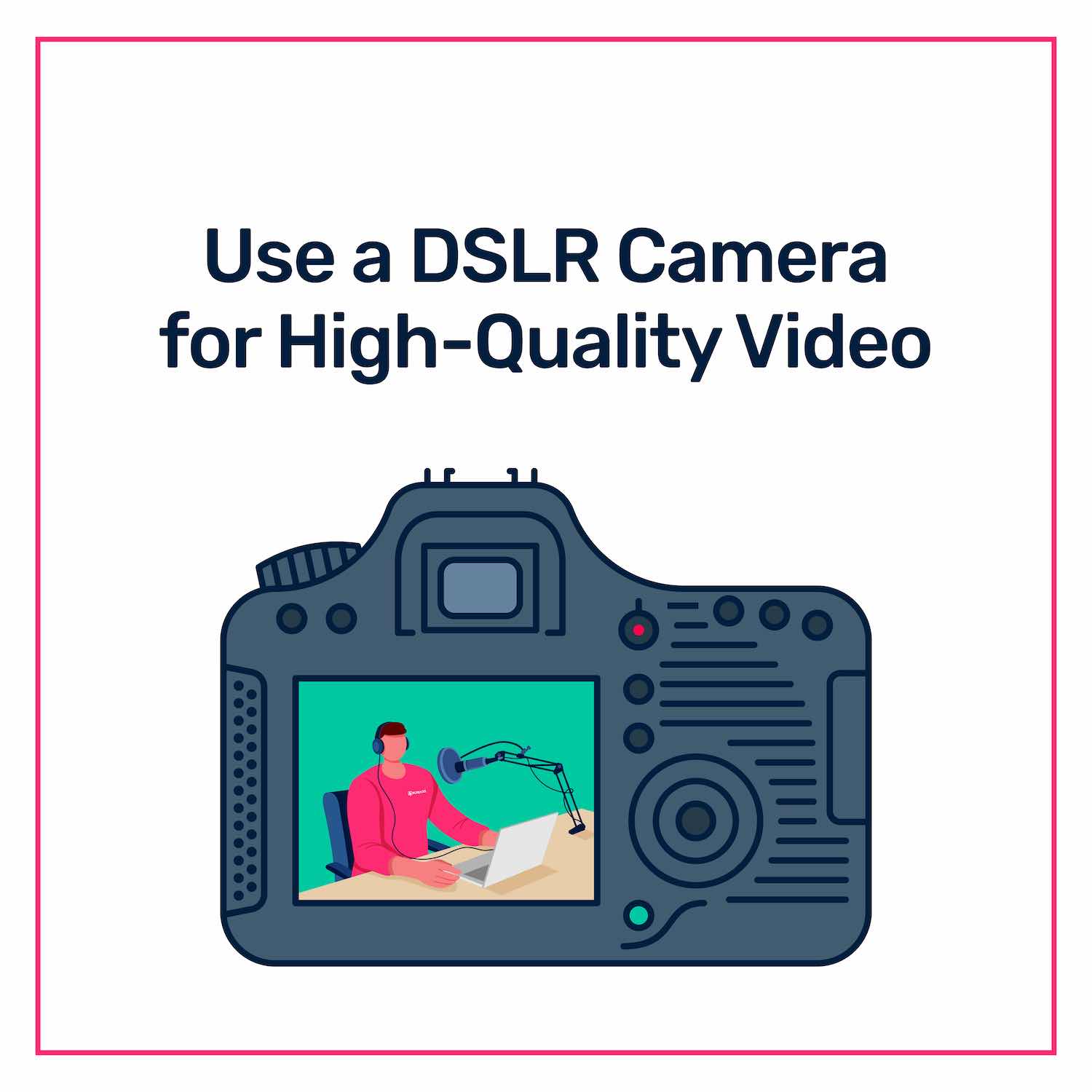
If you run a video podcast, you should invest in a good video camera.
Many will tell you to start with a webcam, which should be enough. The reality is that the video podcast industry is highly competitive, so not having your video quality in check will keep your YouTube channel under the radar.
The good news is that video equipment has become accessible, with cameras such as the Canon M50 or Canon R50 being a top choice for content creators.
Accessories needed for a video camera
-
HDMI Cable - Used to connect from Camera to Computer
-
Capture Card - A simple device that will capture the video feed and transfer it to your computer
-
Camera Stand - You could opt for a tripod or a clip-on stand
-
Dummy Battery - Used to connect your camera directly to power without recharging batteries
Lighting
No matter the quality of your camera, without proper lighting, your videos will look dark and unprofessional.
You can buy a wide variety of lights online, from inexpensive ones to top-of-the-line brands such as Aputure.
Lighting depends on your environment and type of podcast, so you may choose to buy one, two or even three lights to achieve a good result.
One light would be enough for remote recordings. You may consider placing two lights for in-person recordings, one for each speaker.
This is the type of light we would recommend:
How To Start A Podcast With The Right Podcast Recording Software?
Many podcasters find choosing the right recording software difficult when starting a podcast. There are plenty of solutions there, but generally we can split them into three categories.
Remote Recording Software
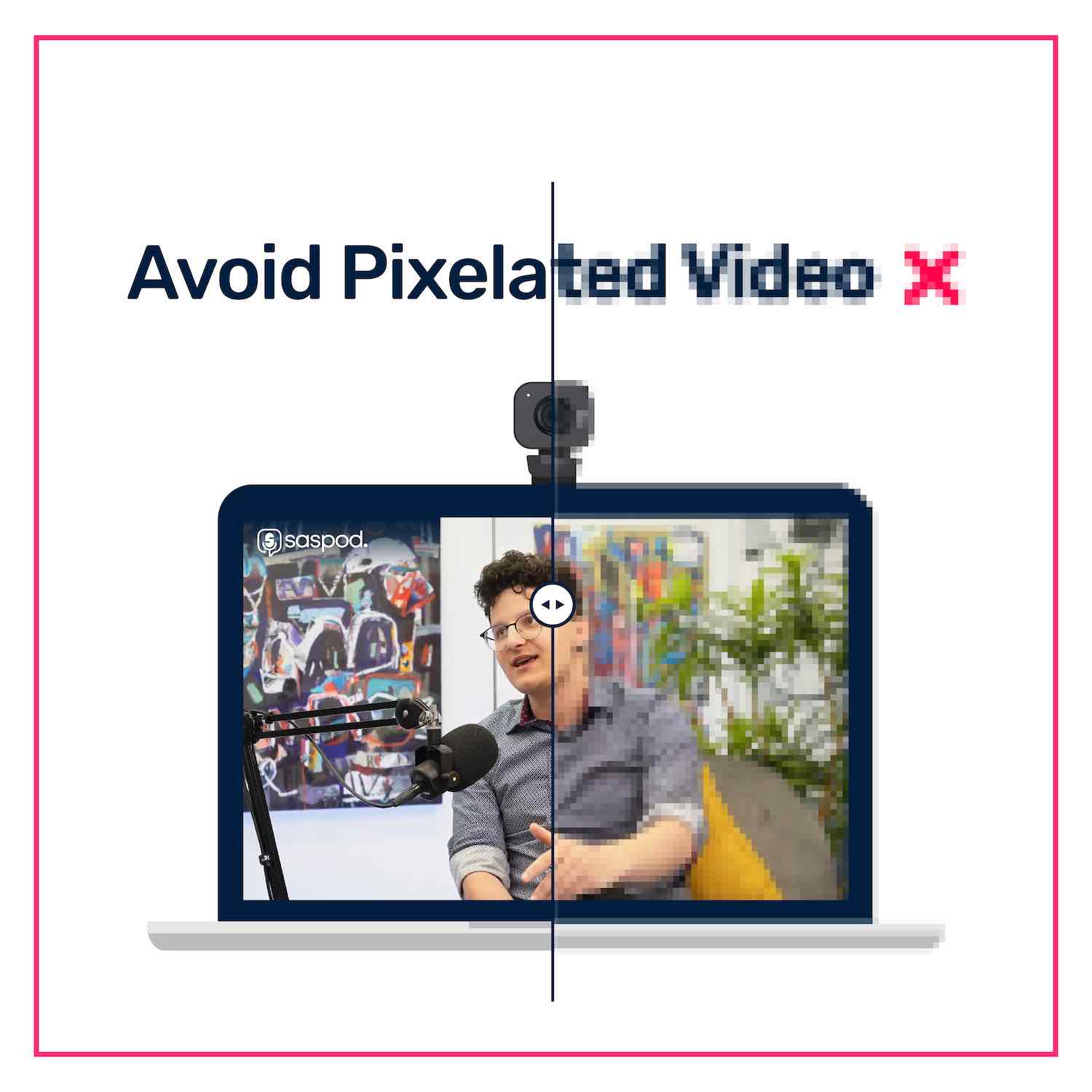
As the name suggests, this podcast recording solution is best suited for remote recordings.
This type of recording software allows you to record audio without compression. Audio files are recorded directly on all participants' computers while providing a video stream. Later, the software automatically uploads the recorded audio files to the server, making them available for editing.
A popular remote recording software is Riverside.fm. Another alternative we would recommend is Zencastr.com
Local Recording Software
This type of software is best suited for on-site podcast recordings. Install the software on your computer, and hit record.
We recommend two free podcast recording solutions.
Audacity - Record audio files with ease
OBS - Best for video recording
Use An External Audio Recording Device
This podcast recording solution involves purchasing additional equipment. Instead of recording a podcast on your computer, you can use an external audio recording device.
The Roadcaster can record audio directly on an SD Card without a computer. Another popular option is the Zoom Podtrak P8.
When it comes to video, you can choose to record it using an ATEM.
This is equipment specifically designed for recording multiple cameras at once in high quality without the hassle. The ATEM Mini Pro can connect up to four cameras and two microphones using two mini-jack audio inputs. Once set, this solution will allow you to sit and hit record.
Test Your Podcast Equipment & Software
You'll need to become familiar with all your podcast equipment.
Read all manuals and ensure you understand all the basic principles of your equipment, so you are not caught off guard when unexpected technical difficulties happen.
Here is my proven test method.
-
Plug in all your equipment and do a wiggle test on all cables
-
Check audio input and ensure you are not clipping (meters should stay in green max yellow)
-
Ensure that you use your actual microphone and not your built-in microphone - tap on the mic to test this. This happens a lot!
-
Turn on lights and check camera focus and ISO settings
-
Start your recording software or device, and record a 1 minute snippet
-
Listen to what you recorded and make adjustments if necessary
Podcast Editing
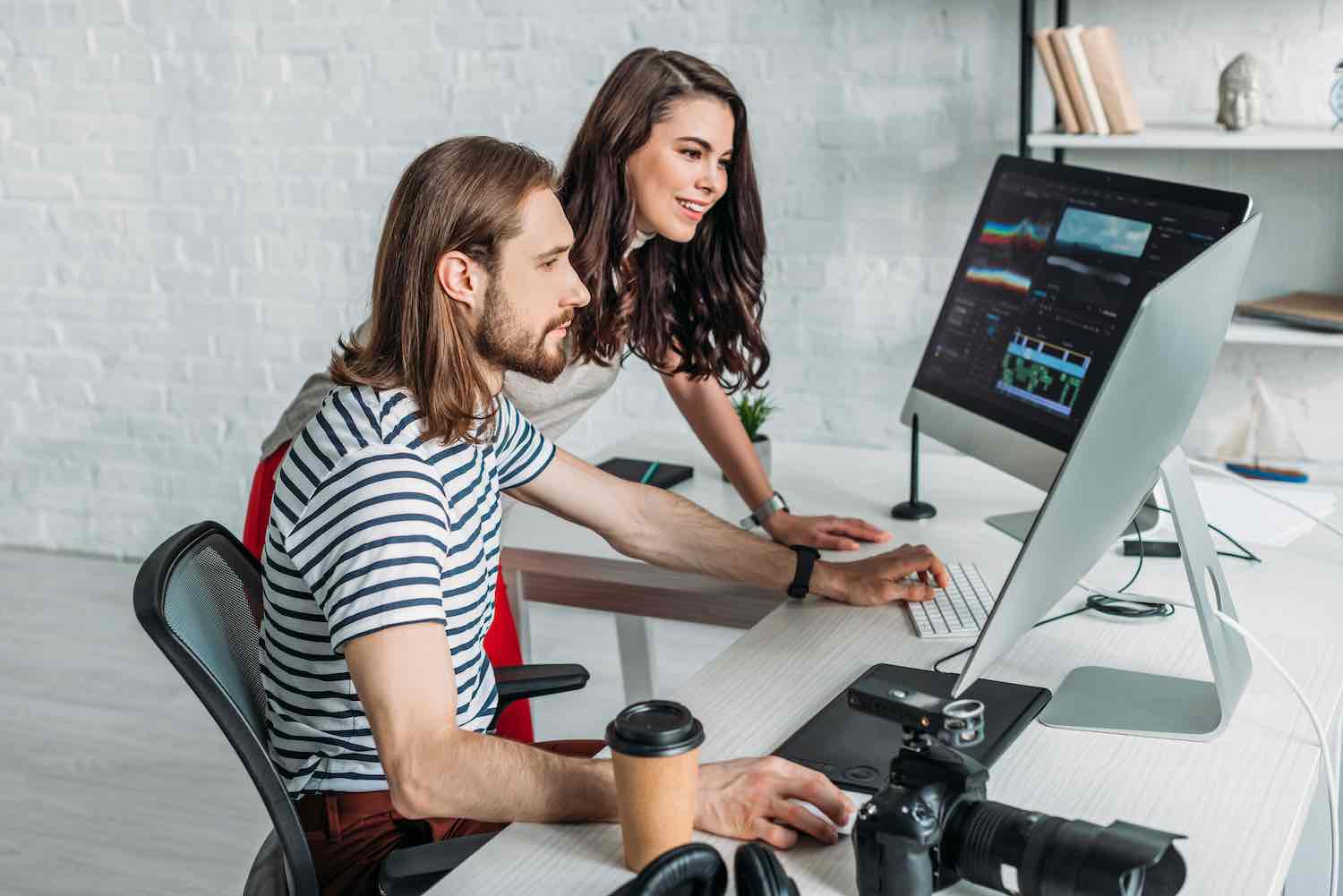
Podcast editing is an essential step in the production of your podcast. With podcast editing, you can improve the flow of the conversation, making your episodes more engaging.
Here is a typical workflow
Download & Import Files
You will need to start by downloading and importing the files into the podcast editor of your choice.
Check that all files are similar in length and match the sample rate and fps. If your files don't match, you'll need to convert them using a tool like Handbreaker.
Audio Restoration

If needed, perform a quick overall cleanup with audio restoration software. We recommend iZotope RX for this, using the Spectral De-Noise feature and the Dialogue De-Reverb module.
Editing
Audio editing & video editing are very important if you want your podcast to stand out from the crowd.
When it comes to audio editing only, you can listen to the podcast from top to bottom and cut out anything that is not necessary to the story or any unwanted uhhms, pauses, mistakes, false starts, or stutters.
One pass through the audio should be enough, and the amount required to edit an audio podcast is 3 times its length.
When it comes to video podcasts, you'll also need to consider multicam editing. This is the process where you choose how the cameras switch from host to guest.
It is good practice to start with multicam editing and then edit the audio files in context with your video podcast.
Since editing video is more complicated, it could take up to 6-10 hours of work for a 60-minute episode.
Mixing
Once you finish with the editing, you'll need to mix the audio so it sounds balanced and natural.
During this step, you should shape audio with EQ and dynamic compression. You could also use other tools, such as audio enhancers. You want to achieve an audio that sounds consistent
Mastering
The term mastering comes from music production, and it describes the final adjustments to audio before public release.
In podcasting, we master audio to sit at the -16 LUFS level, making the content easy to listen to on any device. Professional producers also check the audio content on multiple devices such as Bluetooth speakers, phones and headphones, ensuring that the audio sounds consistent in any environment.
As part of the mastering process, you should also check that your content sounds similar to already released content, so intros and outros should be at the same level for each episode.
Color Grading
Color grading is the process of refining the colour spectrum of video footage to achieve a more natural look or transform flat visuals into stunning, cinematic scenes.
Export
It is time to export your podcast. Typically, podcasts are released as MP3 files and MP4 Files.
Podcast Editing Software for Audio
For audio podcasts, you will want to use a DAW (Digital Audio Workstation).
These programs are designed for working with audio specifically, giving you the capability of removing background noise, cutting pauses, and other non-essential parts of a podcast episode. Our recommendations are: Audacity, ProTools, Adobe Audition.
Podcast Editing Software for Video
For video, you want to choose an NLE (Non-Linear Editing Software). They are designed for working with video, allowing you to edit your podcast in multi-cam, add video transitions, color grade your footage and much more.
At Saspod, we love working with DaVinci Resolve. Not only is DaVinci Resolve a workhorse in video editing, but its base version is completely free. Inside DaVinci, you will also find "Fairlight", a complete DAW inside DaVinci itself. So yes, you can use this software for editing both audio & video as well.
Other viable solutions are Adobe Premiere Pro & Final Cut Pro.
AI Podcast Editing
With the rise of Artificial Intelligence, there is a new category of AI-powered podcast editing tools.
These are perfect for podcasters looking for a DIY approach to editing, speeding up the workflow and resulting in a good enough podcast.
The downside of editing using AI is the quality. AI can not think like a human, and editing decisions are based on pre-programmed algorithms, which may not fit your standards or your audience's expectations. AI can not think subjectively, so your podcast can end up sounding monotonous.
Podcast Hosting Site
Once you decide to make your podcast available to the world, you'll need to choose a podcast platform where you can host your audio. Podcast hosting platforms store your audio podcast episodes and then make them available on all podcast directories via a podcast RSS feed.
Podcast hosting services also provide podcast analytics, helping you see which podcast directories your listeners use, their geolocation, listening habits, and the number of downloads based on device and browser.
There are plenty of podcast hosting platforms out there, and choosing the right one for your new podcast may seem challenging.
How To Start A Podcast with Saspod?
We recommend Saspod as the go-to platform. It's affordable at $9 / month (paid annually), very easy to use, and provides unlimited downloads and uploads. Saspod can distribute your podcast on all major listening platforms, with detailed podcast analytics and more. Also, the Saspod team is always ready to help you set up your account and distribute your show to all podcast directories.
Create An Account
Go to https://saspod.com/register, create an account.
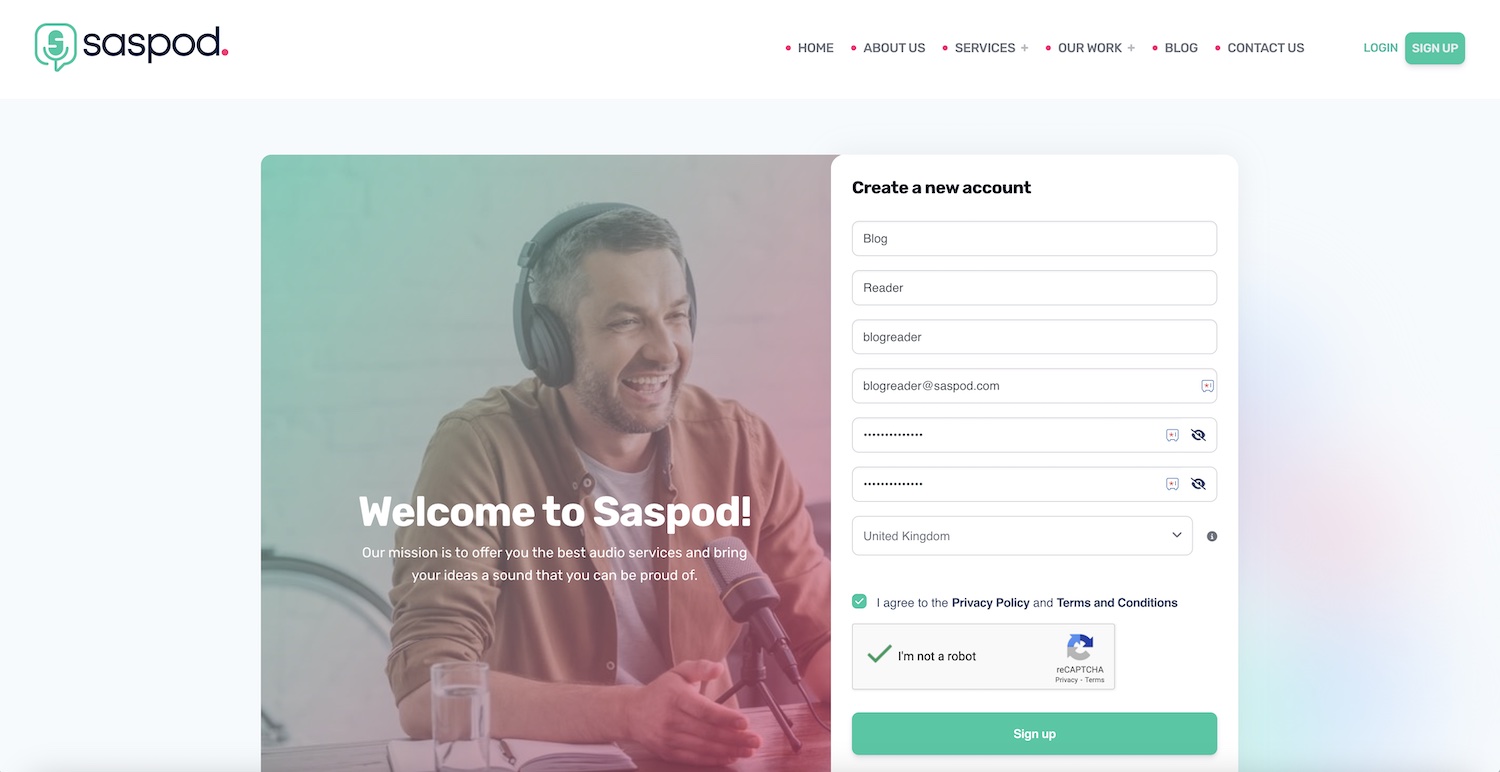
Create A Podcast
Start a podcast by clicking on "Create New Podcast" and choosing an appropriate podcast title. If you don't have a podcast title, don't worry, you can leave the field blank and add it later on. Select plan as "Free Trial".
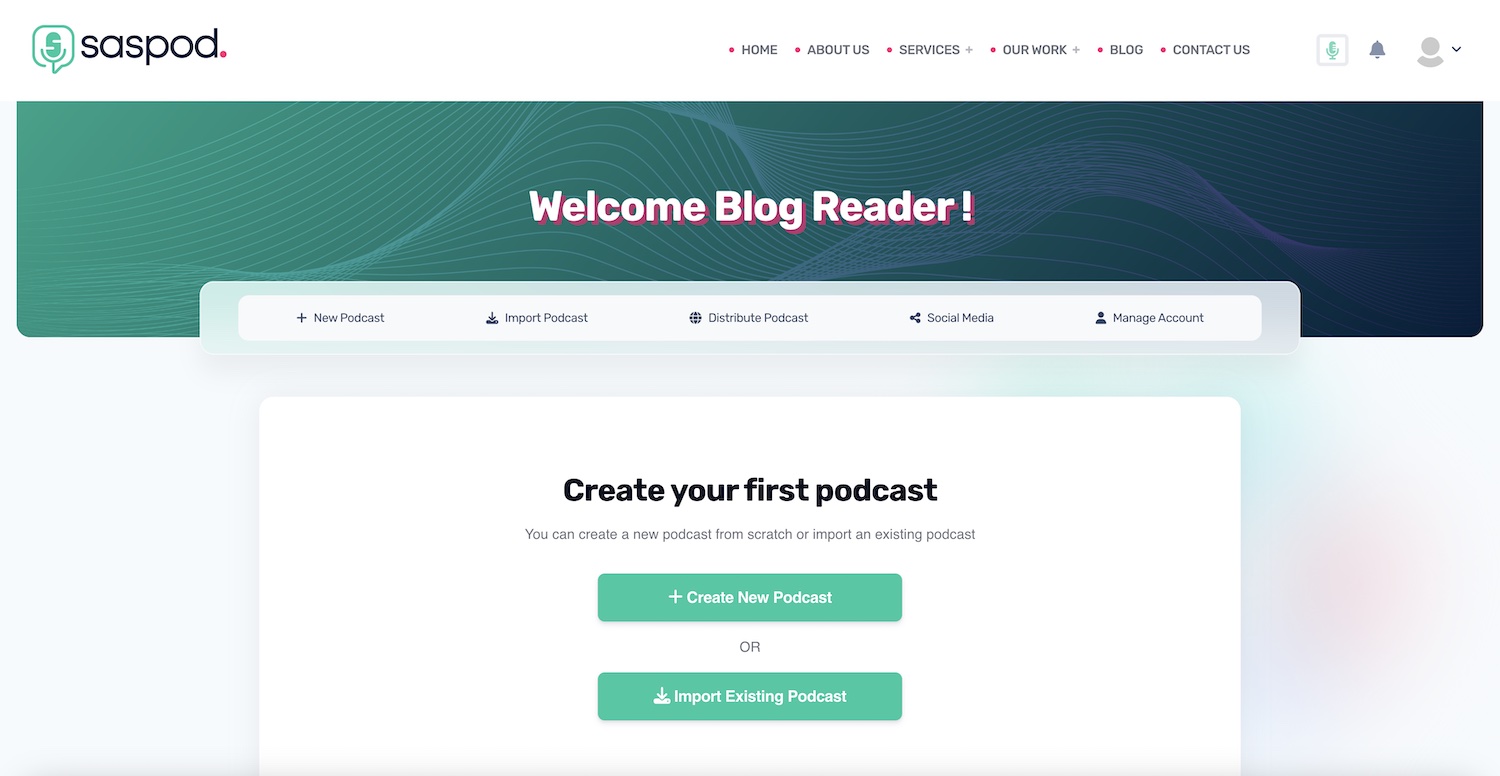
Set Up Your Podcast
Add your podcast artwork and podcast title, then craft a strong podcast description. Podcast platforms use the podcast description to help listeners discover your show, so choosing the right keywords is key.

Create A Podcast Episode
Create your first podcast episode. Upload the audio file and add your episode title. After that, add your show notes in the field below. You can then schedule your post on a certain date, or publish it right away.
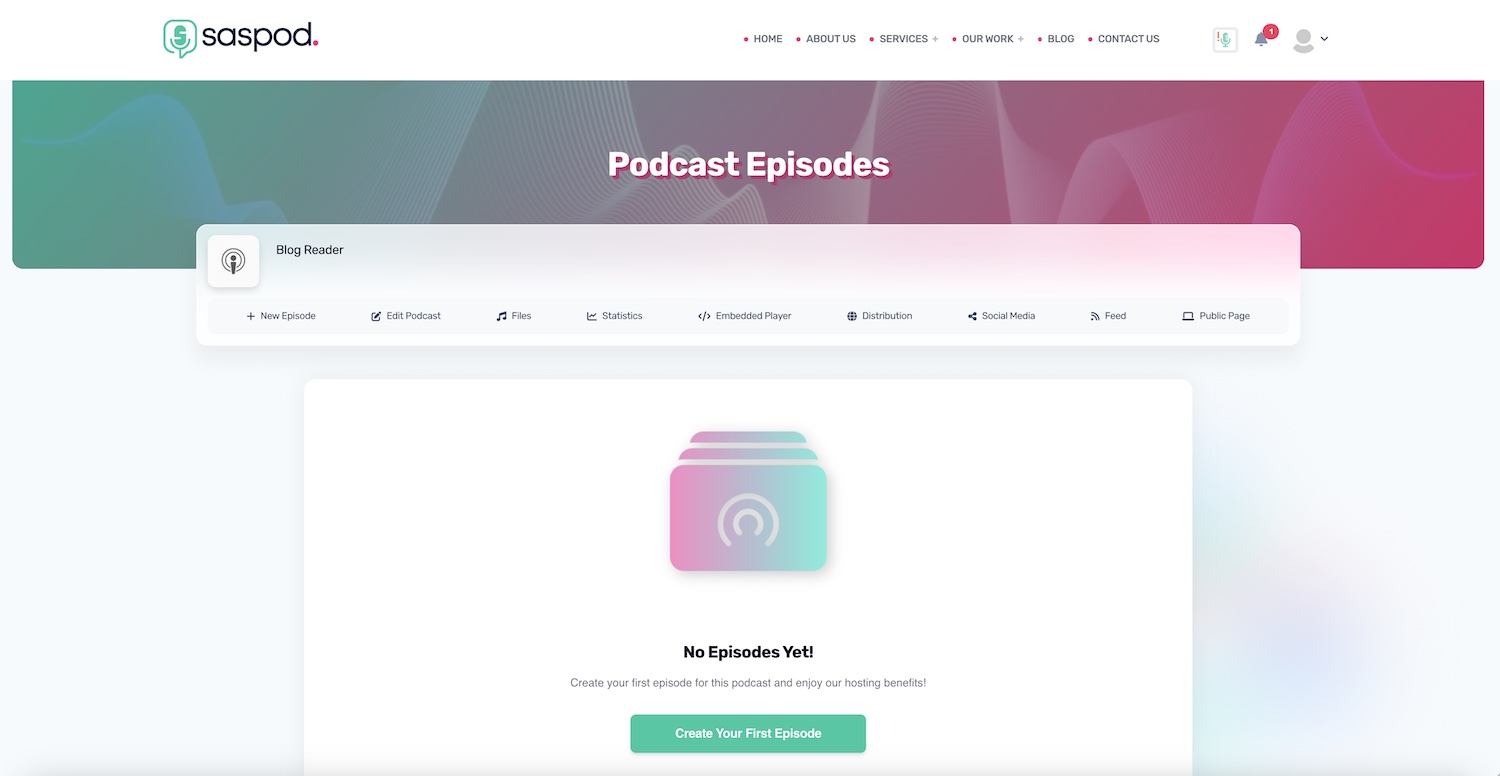
Submit Your Podcast To Podcast Directories
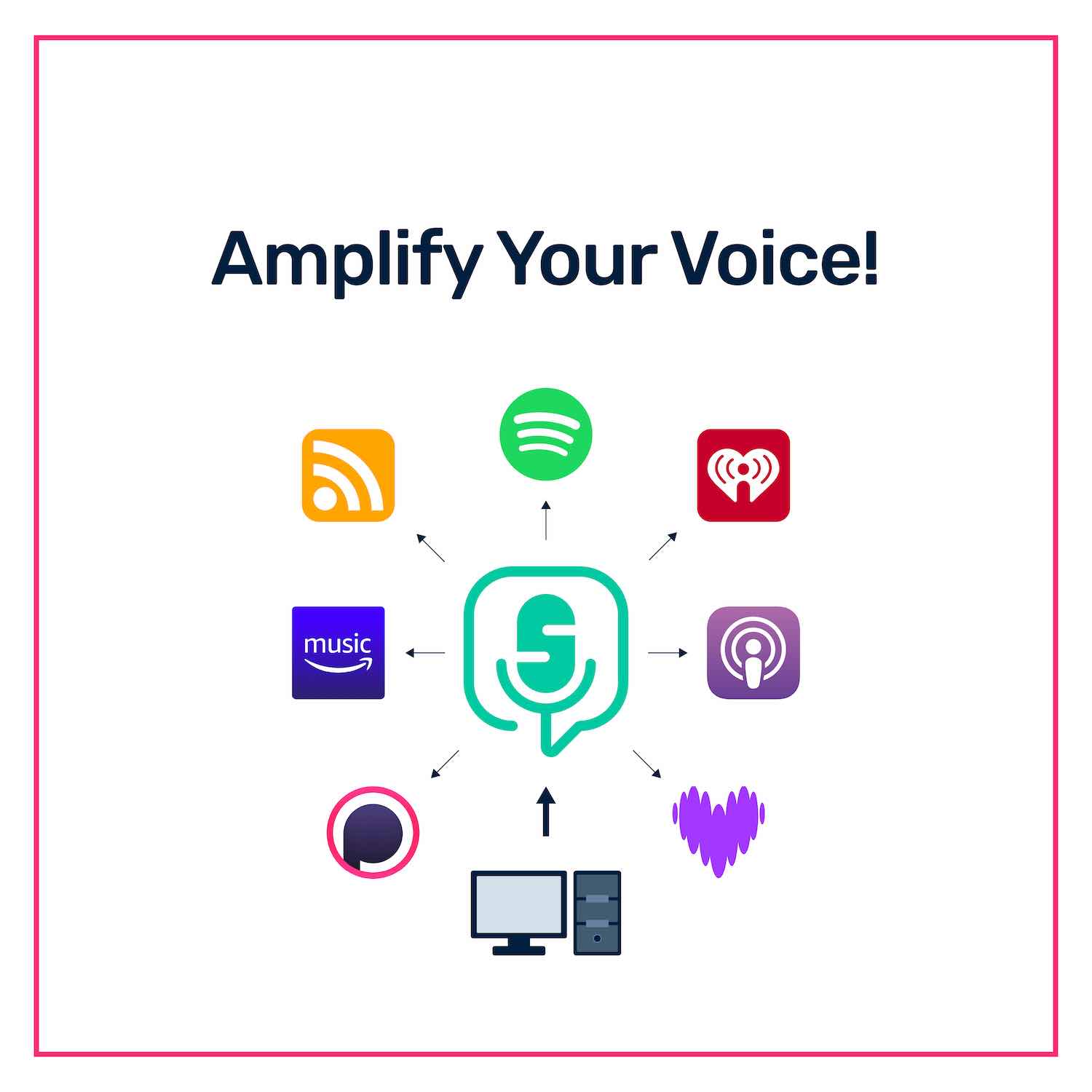
Submit your show to as many podcast directories as possible, this will give you more reach, making your podcast easier to get discovered.
In Saspod, all you need to do is navigate to "Distribute Podcast" and follow the steps for each platform one by one.
Submit Podcast to Apple Podcasts
Most podcast directories are easy to distribute to; however, Apple Podcasts requires a little more work.
Firstly, you will need to create an Apple Podcasts account; this may prove more difficult than it seems. Once an account is created, you'll need to verify it by adding a payment method. Don't worry; Apple Podcasts won't charge you; they just use this information to verify you.
The easiest way to go about this, is to add a payment method to iTunes or the App Store using an apple device such as an iPhone or MacBook. I know - not the easiest thing in the world.
Once that's done, you will need to submit your Saspod RSS feed to Apple Podcasts, and wait for the show to be verified. It can take up to 3 days for the show to be verified. Once verified, log into your Apple Podcasts account and publish the show.
Submit Podcast to Spotify
Submitting your show to Spotify is similar. All you need to do is start an account with Spotify for Creators and submit your show, complete the wizard and copy/paste your Saspod RSS Feed.
More Podcast Directories
The beauty of podcasting is that you can distribute your podcast to as many directories as you want.
Here are some popular ones:
-
iHeart Radio
-
Deezer
-
Player FM
-
Amazon Music + Audible
-
Podchaser
-
Podcast Index
-
Listen Notes
-
Pocket Casts
-
Samsung
-
Overcast
What Are Show Notes?
Show Notes refer to the text that will appear below your audio episode on listening platforms such as Apple Podcasts. At a minimum, what you want to add is a basic summary, but what we recommend is to add the following sections.
What Are Podcast Categories?
Each podcast hosting site can place your show into up to three podcast categories. Your first category will represent the main one. It is important that you select the right category for your show; otherwise, you may place your podcast in front of the wrong audience.
Learn more about podcast categories on Apple Podcast.
Spotify - The Free Podcast Platform
If your budget is low, you can opt for a free podcast hosting service such as Spotify.
In 2019, Spotify acquired Anchor, a free podcast hosting solution for podcasters on a budget. Since then, Spotify has integrated Anchor into Spotify, offering free podcast hosting with the ability to distribute on all major listening platforms.
Although Spotify offers a free podcast hosting service, it lacks certain premium features which paid podcast hosting companies provide.
Podcast Website
Before you start a podcast, you might want to create a website. This will be your hub for all podcasting, allowing your episodes to be discovered on Google.
Some podcast hosting companies provide a feature called "podcast website". In reality, this feature is just a page on your podcast host account and nothing more. We recommend creating a website using website builders such as WordPress or Squarespace, the first being our favourite. You can hire a web developer for this, or if you are technical enough, you can do it yourself.
If you already have a website, you might consider starting a podcast page instead.
On the website, you must have an embedded player and links to all podcast platforms. We would also encourage writing an original blog post with each episode. This will increase your ranking on Google, leading to better SEO and traffic.
Start A Podcast With A Successful First Podcast Episode
Your first episode will dictate the path forward, so you must prepare. Here are a few things you need to keep in mind before you launch your first episode.
-
Create a backlog of episodes (You always want to have a few episodes ahead)
-
Start with a pre-promotion campaign. Don't just post your first podcast episode on Instagram out of the blue. Create some promotional content that you can share with your audience at least 2 weeks before the launch.
-
Release the best episode. This will create trust and authority right from the beginning, making it easier to retain your audience.
Promote Your Podcast
After all that work, you guessed it - more work! Starting a podcast is hard enough, but promoting it - that is where the real work begins. Without promotion, your podcast will be undiscoverable, so it is important that you promote your podcast as much as possible.
Organic Podcast Promotion
This is my favourite and most rewarding approach. Of course, you could start buying LinkedIn or Meta Ads for your podcast, but is that a clever use of your marketing budget? Ultimately, if your existing audience doesn't tune into your podcast, isn't a lack of planning the issue? (See above). Also, it's easier to purchase customers directly than listeners and convert them into customers.
Create Social Media Content
Your social media audience is already engaged, so it would make sense to start there.
Repurpose your content into reels or audiograms and share them with your followers. Don't forget to add a link to your full episode in the comments so your followers can easily find it.
You should always consider cutting your podcast into 10-15-minute clips. It is much harder to convert followers to Spotify or Apple Podcasts, so why not give your followers access to your episodes on the social media platforms they use the most?
Share Your Podcast via a Newsletter
If you don't have a newsletter, you must build one. It's becoming more important to own your audience and not allow big players such as YouTube, Apple Podcasts or Spotify to dictate your content creation future. Build and share your podcast with your newsletter. A simple call to action mid-episode to join your list is all that's needed.
Search Engine Optimisation (SEO)
Podcasting can play an essential role in growing your presence on Google.
-
Write a blog post for each episode with a low-competition and high-volume keyword. You can turn your episodes into transcriptions and then into articles using AI. One note of caution: always shape and turn what AI creates into your own style. Google doesn't like AI content!
-
Book yourself on other podcasts and gain backlinks.
Paid Podcast Promotion
Running a paid campaign can boost your show; however, approach this carefully. Never pay YouTube to promote your YouTube channel, as this can discourage YouTube from showing your podcast organically.
You can run ads on LinkedIn & Meta for your podcast, but make sure that you do so by promoting an actual video of your podcast and not a link to your podcast. You can still post your podcast link in the comments.
You can promote your podcast on Spotify's ad management platform. One of the advantages is that you serve ads to a platform where people listen to podcasts.
Podcast Monetization
So, how do you make money podcasting? I will share a few podcast monetization techniques with you.
Sponsorship
Once your podcast takes off, you can consider signing a sponsorship deal. Finding sponsors for your podcast isn't easy, but sponsors will start queuing up if your podcast is good and is targeted well.
You should start looking for sponsors once you hit 1000 downloads per episode. Choose your sponsor carefully, and ensure your audience matches their customer profile. You can sign a Cost Per Mile or a Fixed Per Episode deal.
Cost Per Mile: The amount you will get paid for every 1000 listeners.
Fixed Per Episode: The amount you will get paid for each episode, regardless of the number of listeners.
Affiliate Marketing
You can promote products with an affiliate deal. For every sale you make through your podcast, you pocket a commission. The best part of this strategy is that you can begin doing this from your first podcast episode. There are many brands with an affiliate program, all you need to do is join them.
YouTube Ad Revenue
Once you hit YouTube's eligibility for ad sense you can start earning passive income from the platform. All you need to do is keep creating great content and join the program once eligible.
Selling Merchandise
You can start selling merchandise right from the start, and it doesn't need to be hard. All you need to do is sign-up to a print on demand store such as Printful, integrate it with Shopify and start earning.
Crowdfunding
Everyone wants loyal fans, and there are people that are ready to support you financially just for running a podcast and make it available for free. One way to make money podcasting is to use platforms such as Patreon or Buy Me A Coffee, start an account and invite your audience to support you. To make this strategy work, you might consider releasing Patreon exclusive content, rewarding the help you get.
Converting Leads To Your Business
Finally, in my opinion, the best way to make money podcasting is through your actual business. Podcasts are powerful marketing tools, converting listeners into loyal clients. The chances are that if someone loves your podcast, they will be more likely to buy from your business. All you need to do is "sponsor your own podcast".
How To Start A Podcast Easily?
The easiest way to start a podcast is to hire a podcast production company. Podcast agencies can help you with the entire podcast production process from start to finish; this way, all you'll need to do is join recording sessions and gain time to take care of your business instead.
This approach can be expensive, but the return on investment makes it attractive for medium to large businesses.
How To Start A Podcast FAQ
What's the ideal episode length?
There isn't a precise number, but what you need to consider is your target audience.
Do they get distracted easily? If the answer is yes, episodes of less than 30 minutes would be ideal.
Is your podcast more educational, and do you want to provide as much information as possible? In that case, 60-90 minutes would be the ideal target.
What's the difference between a dynamic and a condenser microphone?
USB and XLR microphones can come in two shapes: dynamic or condenser. The big difference between these shapes is how the microphones capture sound. Condenser microphones capture sound using a larger capsule, allowing for more detailed recordings.
The downside is that they are usually prone to capturing unwanted noise. Dynamic microphones are used in non-ideal environments where noise could become an issue. When using a Dynamic microphone, you need to ensure you stay right in front of it, otherwise your recording will sound distant.
Why start a podcast?
Most people launch podcasts as part of a business strategy. Others decide to start podcasts as a hobby. So no matter what the reason is, it is important you have fun podcasting!
How much does it cost to start a podcast?
It depends on how much you want to get involved. You can run your podcast essentially for free, but most podcasters will outsource certain parts of production.
The average cost for editing a typical audio podcast is 200$, while for a video version would be around 500$. You can expect to pay around $7k / month for a complete Done For You service, which will include an entire strategy and total production of your podcast.
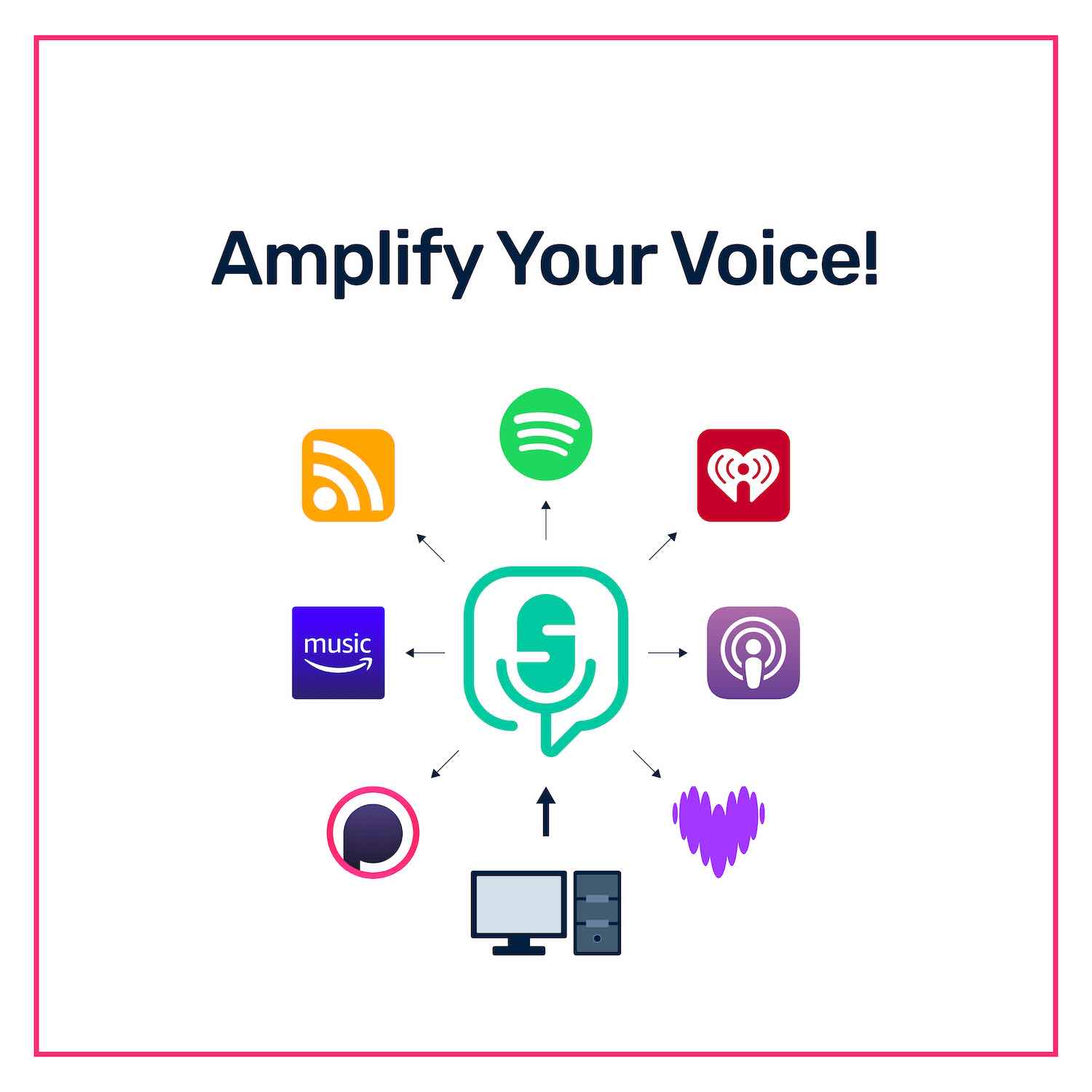

Comments
No comments yet!